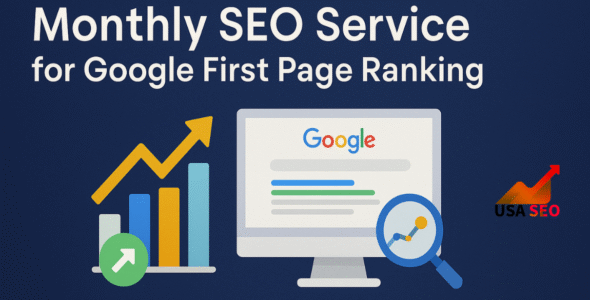The SEO and content marketing landscape has changed drastically over the past few years, and 2023 will be no different. As technology and search engine algorithms evolve, marketers adapt their strategies to keep content visible, engaging, and shareable. In this blog post, we’ll explore key SEO and content marketing trends for 2023 and how marketers can leverage them.
Google’s mobile-first indexing
Google’s mobile-first indexing uses the mobile version of a website for indexing and ranking in search results. More users browse the web on mobile devices than desktops, so Google prioritizes relevant search results for mobile users.
In the past, Google used its desktop version to determine a website’s relevance and rank it in search results. This approach wasn’t ideal for mobile users, as desktop versions often had different content and structure, complicating navigation on mobile.
Mobile-first indexing prioritizes mobile version for ranking. This means websites must optimize their mobile versions for search engines and ensure a positive user experience for mobile users.
To ensure your website is ready for mobile-first indexing, you should:
- Ensure your site is dynamic and has a responsive plan that adjusts to various screen sizes.
- Optimize your content for mobile by using short paragraphs, bullet points, and clear headings.
- Additionally, improve your website’s loading speed for mobile users.
- Search engines need to use structured data to help them understand your website content.
- Make sure your mobile version has the same content and functionality as the desktop version
Follow these best practices to ensure your website is optimized for mobile-first indexing and user-friendly on mobile devices.

The rise of voice search
Voice search is becoming increasingly popular with the rise of virtual assistants like Siri, Google Assistant, and Alexa. Voice search allows users to find information online by speaking into their device instead of typing a query.
As voice search continues to grow, here are some key trends and considerations for businesses to keep in mind:
- Conversational language: Voice search queries are generally longer and more conversational than text-based queries. Businesses should create content with natural language, optimized for long-tail keywords.
- Local search: Local: Many voice search queries are related to local searches, like “Where’s the nearest coffee shop? Organizations must optimize for local search and ensure proper listing in directories like Google My Business.
- Featured Snippets: Voice assistants prioritize top search results, so businesses should optimize content for featured snippets.
- Mobile-first: Voice searches are mainly on mobile, so ensure your website is mobile-friendly and loads quickly.
- Schema Markup: Helps businesses improve voice search visibility by allowing search engines to better understand website content.
- Personalization: Virtual assistants like Alexa and Siri personalize search results using data about a user’s location, search history, and preferences. Businesses should create content that caters to their target audience’s needs and is personalized to their interests.
As voice search increases, businesses must optimize for natural language, local searches, mobile devices, and prioritize personalization.
Shift to topic-based content
In recent years, there has been a shift towards topic-based content in SEO and content marketing. Instead of creating content around specific keywords, businesses are now focusing on creating content that covers a broad topic in depth. This approach is known as subject clustering or content clustering.
Here are some key benefits of topic-based content:
- Improved User Experience: Structuring content by topic offers a more relevant, in-depth experience for audiences.
- Better search engine rankings: Topic clusters help search engines understand a website’s theme, boosting rankings for related keywords.
- Increased Organic Traffic: While topic clusters improve search engine rankings, they can also increase organic traffic to a website.
- Better content organization: Grouping related content makes it easier for users to find and navigate a website.
To create effective topic clusters, businesses should follow these best practices:
- Conduct keyword research: Start by researching keywords and phrases related to your business and industry. Use this information to identify broad topics that you can cover in depth.
- Create pillar content: Pillar content is the basis of a topic cluster. It is a comprehensive content piece that covers a wide range of topics in depth.
- Create cluster content: Cluster content is supporting content that covers subtopics related to pillar content. This content should be linked to pillar content to establish topic clusters.
- Optimize for user intent: Topic clusters require understanding user intent and creating relevant content.
- Monitor Performance: Monitor the performance of your topic clusters over time and adjust your content strategy as needed to ensure you are meeting the needs of your audience.
Following these best practices helps businesses create topic clusters that boost rankings, drive traffic, and enhance the user experience.

Increase visual search
Visual search is a new technology allowing users to search for information online using images instead of text. Visual search is gaining popularity due to mobile devices, advanced cameras, and AI advancements.
As the visual search continues to grow, here are some key trends and considerations for businesses to keep in mind:
- Optimization for Image Search: Businesses need to ensure that their images are properly optimized for search engines by using descriptive file names, alt tags, and captions that accurately describe the image.
- Use of visual search engines: Businesses should use visual search engines like Google Lens and Pinterest Lens to help users discover their products and services.
- Image Recognition Technology: Advances in image recognition technology have made it possible for visual search engines to identify objects, logos, and even products within an image. This means that businesses can use visual search to help users find their products even if they don’t know the name or description.
- Integration with e-commerce: Visual search is becoming increasingly popular in e-commerce, with many retailers providing visual search functionality on their websites and mobile apps. It allows users to take a picture of a product and find similar products available for purchase.
- Improved user experience: Visual search provides a more interactive and engaging user experience than traditional text-based search, which can help businesses build stronger relationships with their audience.
As visual search continues to grow, businesses need to ensure that their images are properly optimized for search engines, consider using visual search engines to promote their products and services and incorporate visual search into their e-commerce platforms to provide a better user experience. Functionality must be integrated.
Increase influencer marketing
Force to be reckoned with showcasing has become progressively well known as of late as virtual entertainment has turned into a more conspicuous piece of individuals’ lives. Influencer marketing involves partnering with social media influencers to promote products or services to their audience. This method can be especially useful for businesses that want to reach a younger audience or build awareness of a new product or service.
In addition to promoting products, influencers can provide valuable insights and feedback to businesses based on their interactions with their audience. However, businesses need to ensure that they select the right influencers for their brand and message and that they adhere to regulations around sponsored content and endorsements. As influencer marketing continues to grow, businesses need to carefully consider their approach and ensure they are using influencers effectively and ethically.

The rise of augmented reality
Augmented Reality (AR) has recently emerged as a new technology that blends the digital and physical worlds, creating a more immersive and interactive experience for users. AR overlays computer-generated images in the real world, allowing users to interact with digital content in a more natural and intuitive way. This technology has the potential to transform industries such as retail, healthcare, education, and entertainment.
For example, in retail, customers can use AR to virtually try on clothes or see what furniture will look like in their home before making a purchase. In healthcare, AR can be used to train medical professionals or assist in surgery. However, businesses need to ensure that their AR experiences are user-friendly and add value to the user experience, rather than just being innovations. As AR continues to grow and become more accessible, businesses need to consider how they can use this technology to create innovative and engaging experiences for their customers.
 My Account
My Account 


